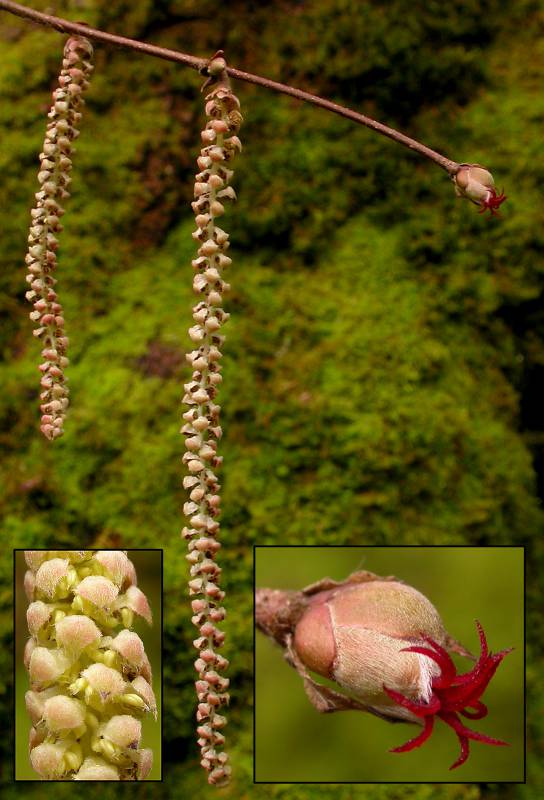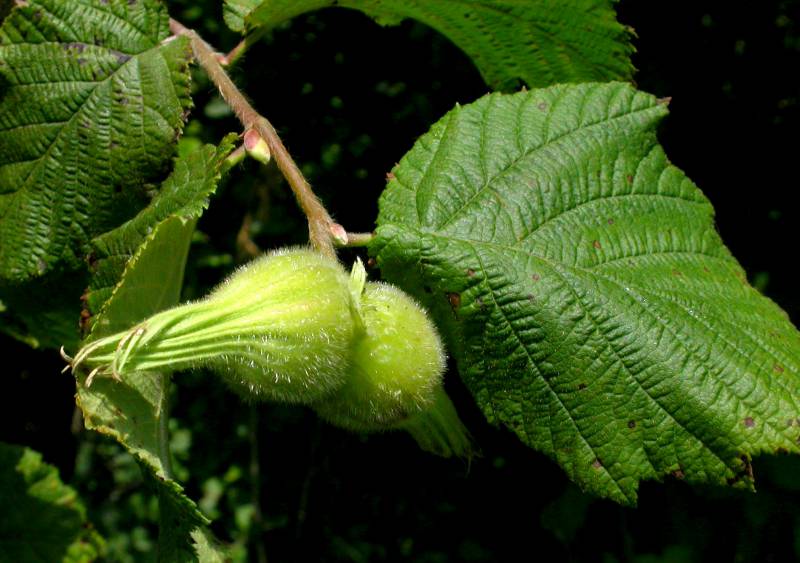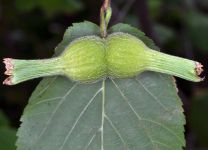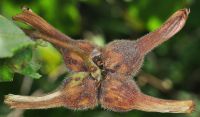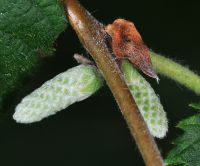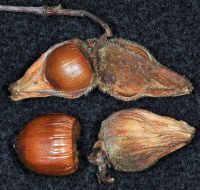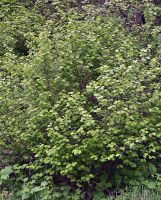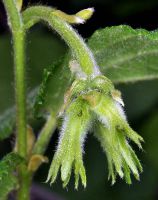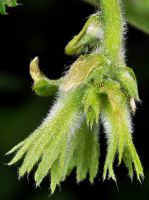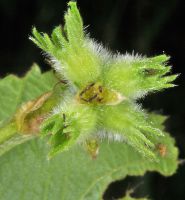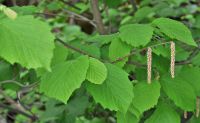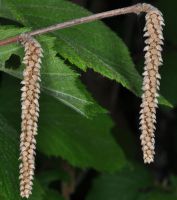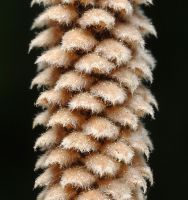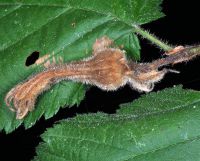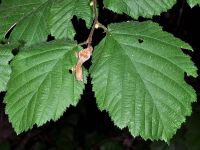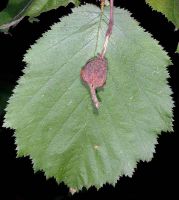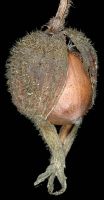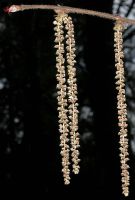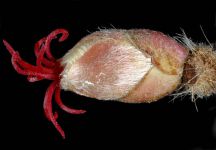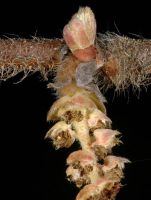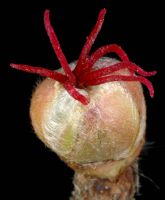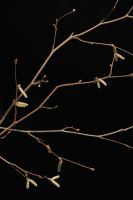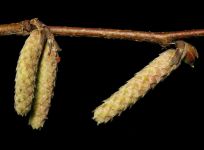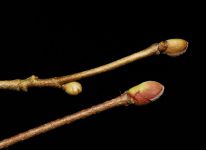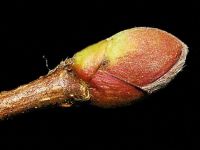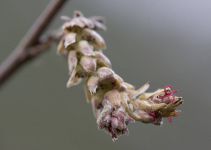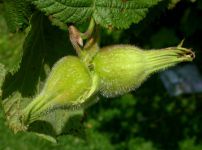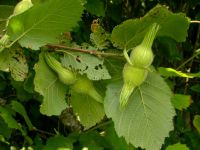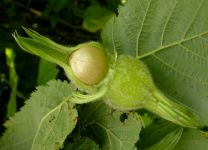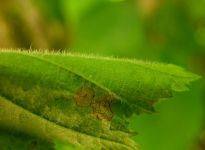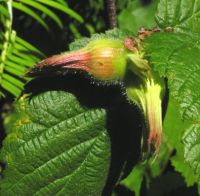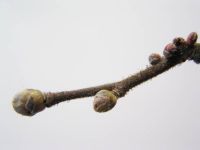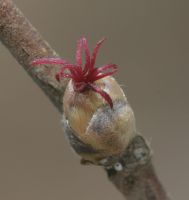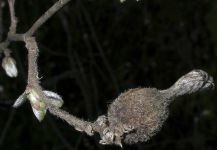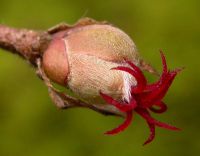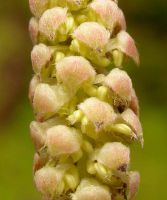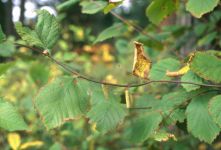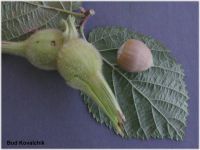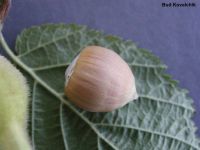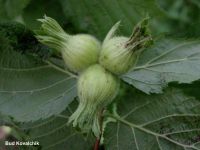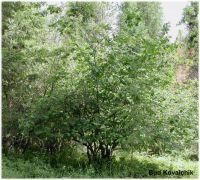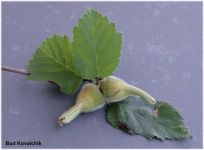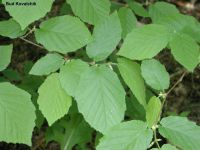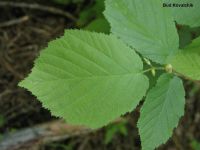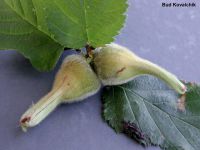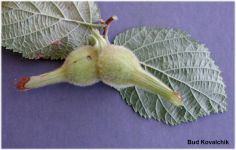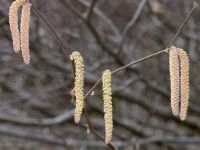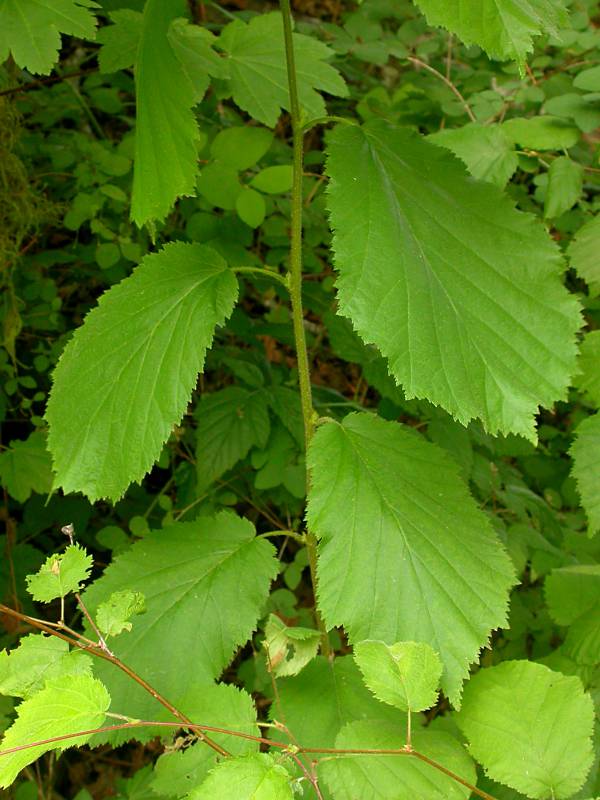
Distribution: Occurring on both sides of the Cascades crest in Washington; southern British Columbia to California, east to the Rocky Mountains, northern Great Plains, Great Lakes region, and eastern North America.
Habitat: Forest edge and openings, thickets, and rocky slopes at low to middle elevations.
Flowers: January-March
Origin: Native
Growth Duration: Perennial
Conservation Status: Not of concern
Pollination: Wind
Multi-stemmed shrub 1-4 meters tall with alternate leaves. First-year twigs typically hairy to glandular, becoming glabrous (smooth) in second year.
5-10 mm long petioles with 4-10 cm long blades; base of blade flat or somewhat heart-shaped; leaf margins doubly serrate; tip of blades coming to a point gradually or abruptly.
All plants have separate male (staminate) and female (pistillate) flowers. Male flowers are arranged sprirally along a pendulous (dangling) catkin; female flowers enclosed in bracts at the tip of the twigs with only the red stigmas visible.
1.5 cm. long, hard-shelled nut enclosed within a prickly-haired tube formed by the involucre (cluster of bracts) originating at the nut base.
The nuts are often harvested shortly after ripening by squirrels and other cache-forming animals.
Publication: Arbust. Amer. 37. 1785.
-
ssp. californica – California hazelnut
 Occurring on both sides of the Cascades crest in Washington; British Columbia to California.
Occurring on both sides of the Cascades crest in Washington; British Columbia to California. - ssp. cornuta – beaked hazelnut Occurring chiefly east of the Cascades crest in Washington; southern British Columbia to California, east to the Rocky Mountains, northern Great Plains, Great Lakes region, and eastern North America.
PNW Herbaria: Specimen records of Corylus cornuta in the Consortium of Pacific Northwest Herbaria database.
WA Flora Checklist: Corylus cornuta checklist entry.
OregonFlora: Corylus cornuta information.
E-Flora BC: Corylus cornuta atlas page.
CalPhotos: Corylus cornuta photos.
USDA Plants: Corylus cornuta information.

